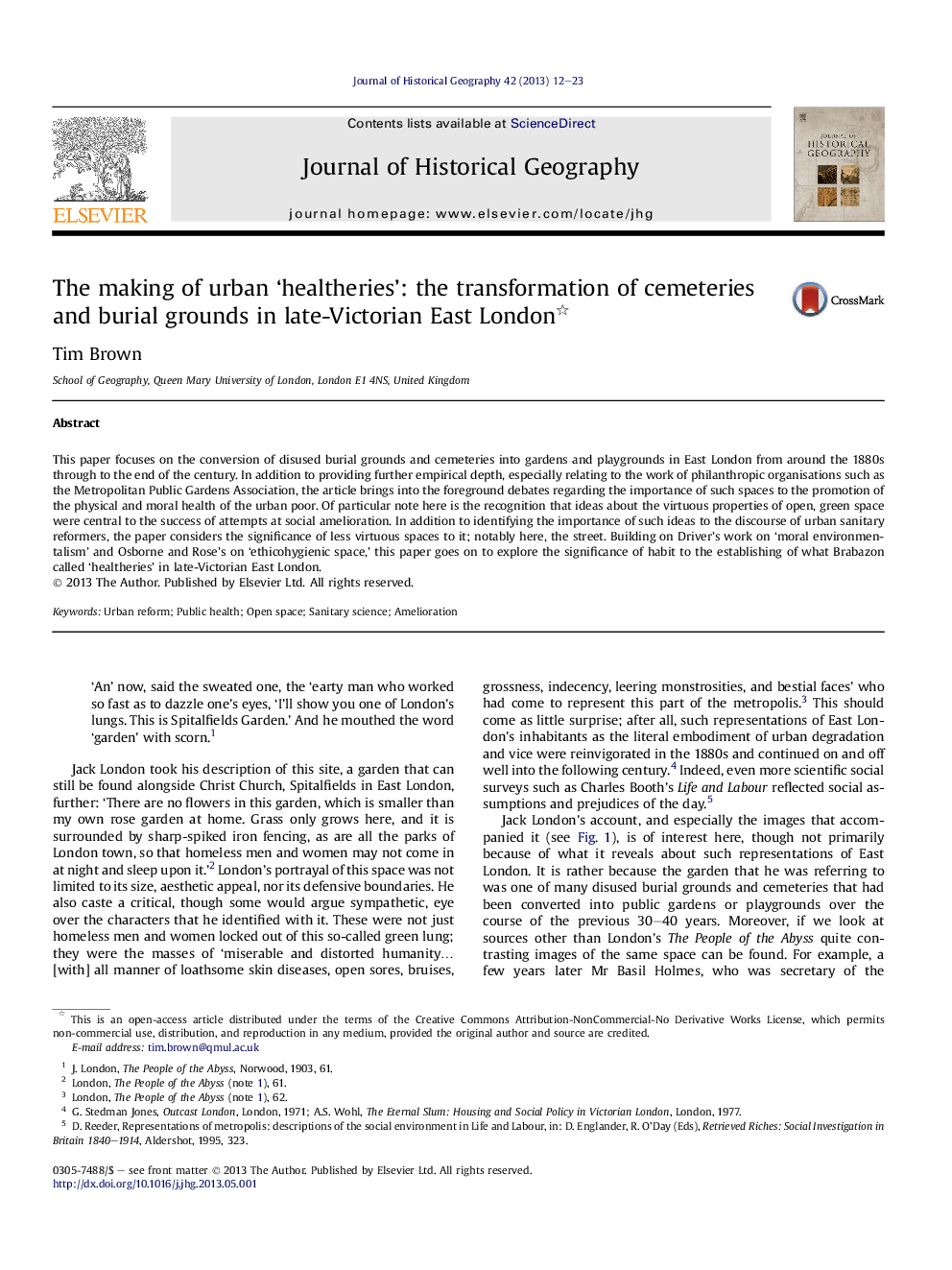| Article ID | Journal | Published Year | Pages | File Type |
|---|---|---|---|---|
| 7448317 | Journal of Historical Geography | 2013 | 12 Pages |
Abstract
This paper focuses on the conversion of disused burial grounds and cemeteries into gardens and playgrounds in East London from around the 1880s through to the end of the century. In addition to providing further empirical depth, especially relating to the work of philanthropic organisations such as the Metropolitan Public Gardens Association, the article brings into the foreground debates regarding the importance of such spaces to the promotion of the physical and moral health of the urban poor. Of particular note here is the recognition that ideas about the virtuous properties of open, green space were central to the success of attempts at social amelioration. In addition to identifying the importance of such ideas to the discourse of urban sanitary reformers, the paper considers the significance of less virtuous spaces to it; notably here, the street. Building on Driver's work on 'moral environmentalism' and Osborne and Rose's on 'ethicohygienic space,' this paper goes on to explore the significance of habit to the establishing of what Brabazon called 'healtheries' in late-Victorian East London.
Keywords
Related Topics
Social Sciences and Humanities
Arts and Humanities
History
Authors
Tim Brown,
